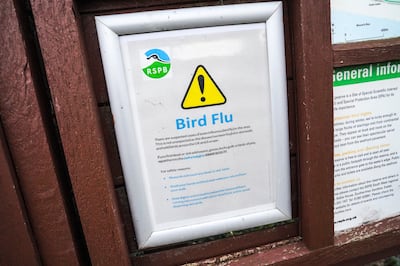Covid-19 remains a public health issue of international concern, the World Health Organisation (WHO) decided recently. As we wait for signs it might become a seasonal virus, another, more familiar foe looks increasingly likely to trigger the next global pandemic.
Bird flu, an influenza A virus, first emerged in 1996. Since then, it has decimated poultry and wild bird populations around the world. But now, the H5N1 virus is spreading to mammals. It has become a highly pathogenic virus with a propensity to jump to humans with a high mortality rate.
WHO statistics show that between January 2003 and November 2022, there have been 868 cases of human infection with H5N1, more than half of which were fatal.
An outbreak of H5N1 reported in a Spanish mink farm last October is worrying. Rather than spreading from wild birds to mink, it is more likely that it spread from mink to mink due to the cramped conditions in which the animals live. Over 50,000 mink had to be euthanised.
READ MORE
H5N1 viruses isolated from the mink have acquired several changes in their genes, at least one of which may help it grow better in mammals. Similar mammal-to-mammal transfer of H5N1 occurred recently among sea lions in Peru, causing a very high death rate.
Collectively, this has sparked concerns that humans could be next and the WHO is urging countries to “strengthen surveillance in settings where humans and farmed or wild animals interact.”
Until now, humans have rarely transmitted the H5N1 virus to another human “unless they have very, very close contact or a very specific condition for transmission,” Dr Sylvie Briand, WHO’s director for epidemic and pandemic preparedness and prevention, says.
But some experts are concerned about the multiple cases of mammalian infections around the world and the implications that has for the virus spreading widely to humans. Dr Shayan Sharif, dean of the Ontario Veterinary College in Canada, says: “When you have mammals dying of a highly pathogenic avian influenza virus, it’s not a good sign. It is a sign that I would take very seriously.”
[ Avian flu devastates Irish seabirds as Europe-wide outbreak threatens to worsenOpens in new window ]
When humans become infected with bird flu they are likely to suffer serious disease. A fatality rate of up to 50 per cent certainly suggests this is the case, although it is possible that some people infected with H5N1 had a very mild illness and were never tested- thus skewing the mortality statistics.
What are the symptoms of H5N1 influenza? Just like other flu viruses, the illness begins with high fever, cough, aching muscles and sore throat. Other possible symptoms include abdominal pain and diarrhoea. But the infection can progress quickly to: severe respiratory illness, including difficulty breathing; pneumonia; and Acute Respiratory Distress Syndrome (ARDS)- which was a feature of early cases of Covid-19.

Just last week, virologists from the University of Utrecht in the Netherlands, writing in Eurosurveillance, the journal of the European Centre for Disease Control (ECDC), said they were concerned about the results of a genomic analysis they had carried out on H5N1 samples from the Spanish mink. They point to changes in the genetic structure of the virus: “such changes … are expected to promote replication and transmission in mammalian hosts, including humans,” they write.
Does this mean the virus might be inching closer to acquiring the ability to easily transmit among humans? Mink are closely related to ferrets, animals that are often used to test the effects of flu viruses in humans. So the mink outbreak is a cause for serious concern.
Bird flu has always been considered a likely source of a future pandemic. This latest evolution of the virus multiplies that risk. That may not be something the public wants to hear, given our understandable weariness from the Covid-19 pandemic.
But it is time to increase our surveillance efforts by testing for the H5N1 virus and sequencing samples from animals and humans at high risk of exposure.















